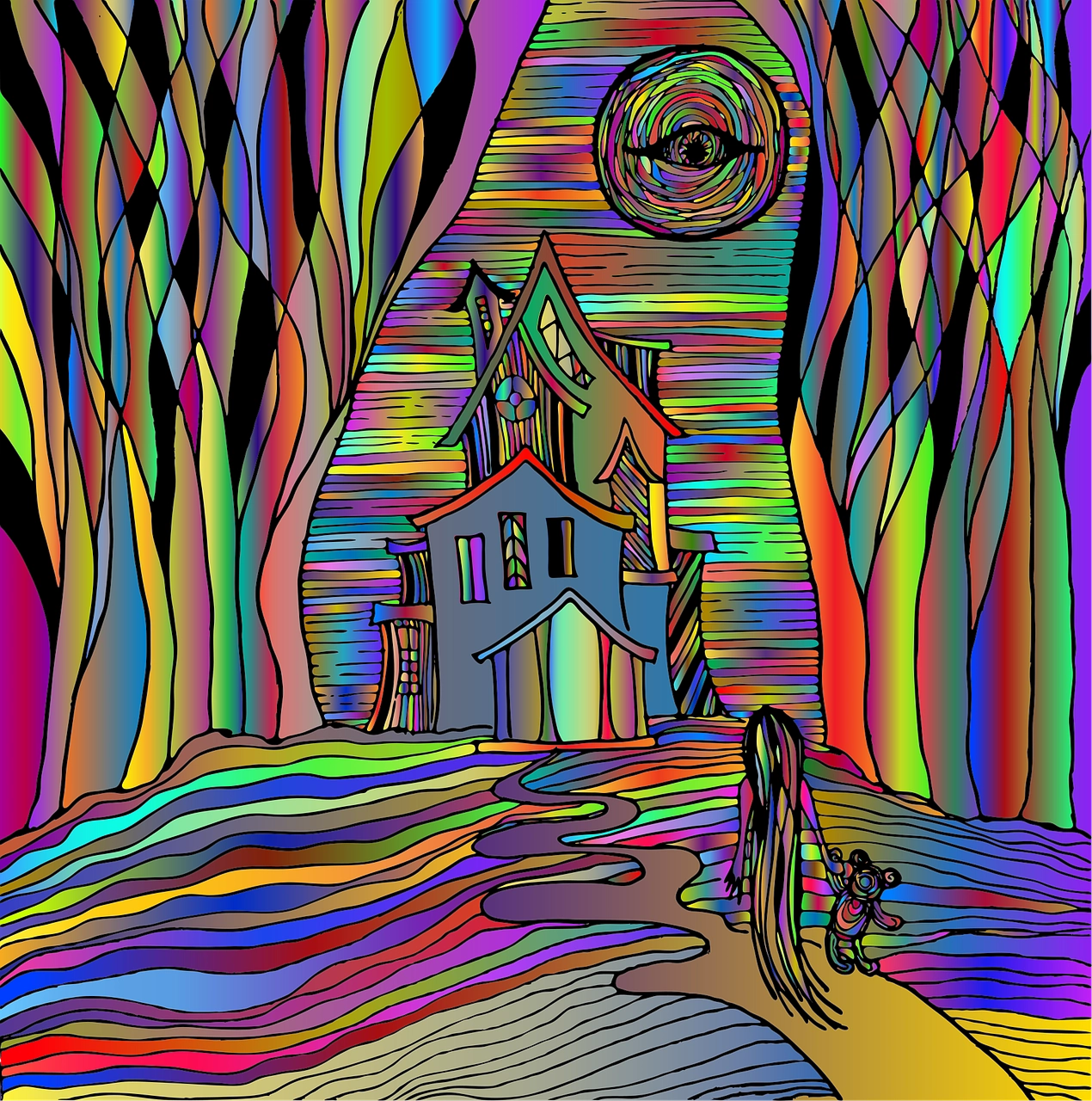How Denmark Shapes Global Urban Development

Looking for more amazing products? Check out our online store and explore our collection here! Happy shopping!
Before diving in, please note: This post is for informational purposes only. If you’d like to know more about how we approach topics, feel free to check out our friendly Disclaimer Page.
Hey there, amazing readers! 
We’re committed to delivering quality posts, and your support (even just sticking around despite the ads) means everything to us. So, bear with us, and thanks for helping us keep the good vibes rolling. Now, on to the fun stuff!
TRANSLATE BUTTON AT THE END OF THE ARTICLE
A Quick Overview: Denmark’s Role in Urban Innovation
Denmark, a small Scandinavian country, has a big impact on how cities are shaped around the globe.
Its innovative approach to urban development emphasizes sustainability, community engagement, and livability.
From eco-friendly designs to cycling infrastructure, Denmark’s urban planning offers valuable lessons for cities worldwide.
This article explores how Denmark influences global urban development through various initiatives and practices, providing insights that cities everywhere can adopt.
The Danish Model: Designing People-Centric Cities
Denmark has carved a niche for itself with its people-centric urban design.
It’s all about putting the needs of the community first.
This means creating spaces where people can thrive—both socially and environmentally.
Mixed-Use Developments: Cities like Copenhagen blend residential, commercial, and recreational spaces.
This mix reduces the need for long commutes and fosters a sense of community.
Pedestrian-Friendly: Wide sidewalks, plazas, and pedestrian-only zones invite people to explore the city on foot rather than relying solely on cars.
Affordable Housing: Denmark places a strong emphasis on providing affordable housing.
This focus helps to keep communities diverse and vibrant.
Public Transport: A well-integrated public transport system makes it easy for residents to get around without a car.
Green Spaces: Parks and gardens are woven into the urban fabric.
They provide essential spots for relaxation, recreation, and even urban agriculture.
By prioritizing human needs over vehicles, Denmark sets a precedent for cities looking to enhance their livability.
I can’t help but admire how they’ve created an environment where community life flourishes.
Sustainable Solutions: Denmark’s Green Urban Planning
Sustainability is at the forefront of Denmark’s urban planning.
The country has set ambitious goals for reducing carbon emissions and increasing green spaces.
Renewable Energy: Wind turbines and solar panels are commonplace.
Many homes and businesses are powered by renewable sources.
Green Roofs: These are becoming a standard feature in urban architecture, helping to insulate buildings while providing habitats for wildlife.
Sustainable Water Management: Denmark uses innovative solutions, like rainwater harvesting, to manage water resources effectively.
Waste Management: The country is a leader in recycling and waste-to-energy systems.
It’s impressive how they turn trash into power!
Eco-Friendly Materials: New developments often use sustainable materials, reducing the environmental impact of construction.
It’s refreshing to see how Denmark doesn’t just talk about sustainability; they actively implement practices that can be adopted globally.
Cycling Culture: How Bicycles Define Danish Cities
One of the most distinguishing features of Danish urban life is the bicycle.
Cycling isn’t just a mode of transport; it’s a way of life.
Infrastructure: Denmark has invested heavily in cycling infrastructure, with dedicated bike lanes and parking stations.
Safety: Safety measures for cyclists are top-notch, making it a secure option for commuters of all ages.
Health Benefits: Cycling promotes a healthier lifestyle, reducing the risk of chronic diseases.
Community Events: Bike festivals and community rides foster a sense of togetherness among cyclists.
Cultural Identity: Biking is an integral part of Danish culture, celebrated in art and literature.
Whenever I’m in Copenhagen, it’s a joy to see families biking together, enjoying the fresh air, and bonding.
It’s a lifestyle that other cities would do well to emulate.
Public Spaces: Creating Vibrant Urban Environments
Denmark understands that public spaces are the heartbeat of a city.
They are where communities gather, celebrate, and interact.
Design: Parks, squares, and waterfronts are artfully designed to encourage social interaction.
Flexibility: Many public areas can serve multiple purposes, from markets to concerts.
Accessibility: Every citizen should be able to enjoy public spaces, regardless of age or ability.
Art Installations: Public art enhances the aesthetic appeal while inviting dialogue among residents.
Event Programming: Regular events in public spaces keep the community engaged and vibrant.
I’ve often found myself in these spaces, enjoying a coffee, watching street performers, or simply chatting with friends.
They’re essential for building community bonds.
Community Engagement: Involving Citizens in Design
Community engagement is a cornerstone of Denmark’s urban planning.
The belief is that everyone should have a say in how their city is shaped.
Workshops: Residents participate in workshops to discuss and brainstorm development projects.
Feedback Mechanisms: Surveys and public consultations allow citizens to voice their opinions on proposed changes.
Collaborative Design: Local artists and architects often collaborate with communities to develop public spaces.
Youth Engagement: Programs encourage young people to contribute ideas, ensuring future generations have a voice.
Transparent Processes: Open communication about urban projects fosters trust and cooperation.
This inclusive approach not only enriches the planning process but also strengthens community ties.
It’s heartening to see citizens engaged in the future of their neighborhoods.
Smart City Initiatives: Technology Meets Sustainability
Denmark embraces technology to enhance urban living.
The concept of smart cities is not just a buzzword; it’s a practical approach to tackling urban challenges.
Data-Driven Decisions: Cities collect and analyze data to optimize services like waste management, traffic flow, and energy consumption.
Smart Grids: These grids help manage energy distribution effectively, ensuring a reliable power supply.
Mobile Apps: Apps that provide real-time information on public transport and city services make life easier for residents.
IoT Integration: Smart sensors monitor air quality and noise levels, helping to create healthier environments.
Citizen Participation: Digital platforms allow residents to report issues and suggest improvements directly to city officials.
I can only imagine how refreshing it must be to live in a city where technology enhances quality of life without overshadowing community spirit.
The Influence of Danish Architecture on Global Trends
Denmark’s architectural style has gained international acclaim.
The blend of functionality and aesthetics is inspiring cities around the world.
Simplicity: Danish architecture often embraces minimalism, creating spaces that are both beautiful and practical.
Sustainable Designs: Architects prioritize eco-friendly materials and energy efficiency in their projects.
Public Buildings: Libraries, schools, and community centers are designed to be inviting and accessible.
Urban Integration: New buildings seamlessly integrate with existing neighborhoods, respecting the historical context.
Innovative Concepts: Concepts like “shared spaces” are gaining traction, promoting social interactions among residents.
Every time I see a new Danish building, it feels like a breath of fresh air.
Their commitment to thoughtful design sets a high standard for urban architecture.
Case Study: Copenhagen’s Transformation and Impact
Copenhagen serves as an excellent case study for urban transformation.
The city has undergone a remarkable change, shifting from a car-centric layout to a model of sustainability and livability.
Bicycle Infrastructure: The city’s extensive bike lanes have made cycling the preferred mode of transport for many residents.
Green Initiatives: Copenhagen aims to be carbon-neutral by 2025, showcasing ambitious eco-friendly projects.
Waterfront Development: Once neglected, the waterfront is now a bustling area with parks, restaurants, and cultural venues.
Community Projects: Local initiatives have transformed neighborhoods, fostering a sense of ownership and pride.
International Influence: Copenhagen’s success has inspired cities worldwide to adopt similar practices.
Witnessing Copenhagen’s transformation is nothing short of inspirational.
It’s proof that a city can evolve into a thriving urban environment with the right vision and commitment.
Urban Resilience: Preparing Cities for Climate Change
As climate change presents challenges globally, Denmark focuses on building urban resilience.
The aim is to prepare cities for future environmental challenges.
Flood Management: Innovative drainage systems mitigate flooding risks, particularly in low-lying areas.
Green Infrastructure: Parks and green roofs help absorb rainwater, reducing runoff and promoting biodiversity.
Climate Action Plans: Local governments create comprehensive plans to address climate risks and promote sustainability.
Community Awareness: Educational programs encourage residents to participate in climate action initiatives.
Research and Innovation: Collaboration between universities and governments drives new solutions for urban resilience.
Knowing that cities can be fortified against climate threats gives hope.
Denmark’s proactive approach can serve as a blueprint for others facing similar challenges.
Global Collaborations: Denmark’s Influence Worldwide
Denmark’s influence extends beyond its borders through various international collaborations.
The nation actively shares its urban development strategies with countries around the globe.
Knowledge Sharing: Denmark participates in global forums to exchange best practices in urban sustainability.
Partnerships: Collaborations with cities worldwide foster innovation and mutual learning.
Advisory Roles: Danish experts often advise other nations on sustainable urban development.
International Projects: The country is involved in numerous projects aimed at improving urban living conditions globally.
Cultural Diplomacy: Denmark showcases its urban achievements through cultural exchanges and exhibitions.
It’s heartening to see a nation willing to share its successes and challenges with the world.
This spirit of collaboration can truly pave the way for global improvement.
Conclusion: Lessons from Denmark for Future Cities
Denmark’s urban development model offers valuable lessons for cities worldwide.
Its focus on sustainability, community engagement, and innovative design highlights a holistic approach to urban living.
Cities can learn:
Prioritizing people creates livable environments.
Sustainability should be a core principle in urban planning.
Engaging the community ensures that development meets the needs of residents.
Smart technology can enhance everyday experiences without compromising values.
Global collaboration fosters shared growth and learning.
Ultimately, Denmark’s success serves as a reminder that cities can be reimagined.
With creativity and commitment, urban spaces can become thriving communities that prioritize the well-being of all residents.
As we look to the future, let’s take a page from Denmark’s book and strive to create cities that are both livable and sustainable.

The Enlightenment Journey is a remarkable collection of writings authored by a distinguished group of experts in the fields of spirituality, new age, and esoteric knowledge.
This anthology features a diverse assembly of well-experienced authors who bring their profound insights and credible perspectives to the forefront.
Each contributor possesses a wealth of knowledge and wisdom, making them authorities in their respective domains.
Together, they offer readers a transformative journey into the realms of spiritual growth, self-discovery, and esoteric enlightenment.
The Enlightenment Journey is a testament to the collective expertise of these luminaries, providing readers with a rich tapestry of ideas and information to illuminate their spiritual path.
Our Diverse Expertise
While our primary focus is on spirituality and esotericism, we are equally passionate about exploring a wide range of other topics and niches 

To ensure we provide the most accurate and valuable insights, we collaborate with trusted experts in their respective domains 
Our blog originally focused on spirituality and metaphysics, but we’ve since expanded to cover a wide range of niches. Don’t worry—we continue to publish a lot of articles on spirituality! Frequently visit our blog to explore our diverse content and stay tuned for more insightful reads.
Hey there, amazing reader! 
Check out our store here and take a peek at some of our featured products below! Thanks for being awesome!










